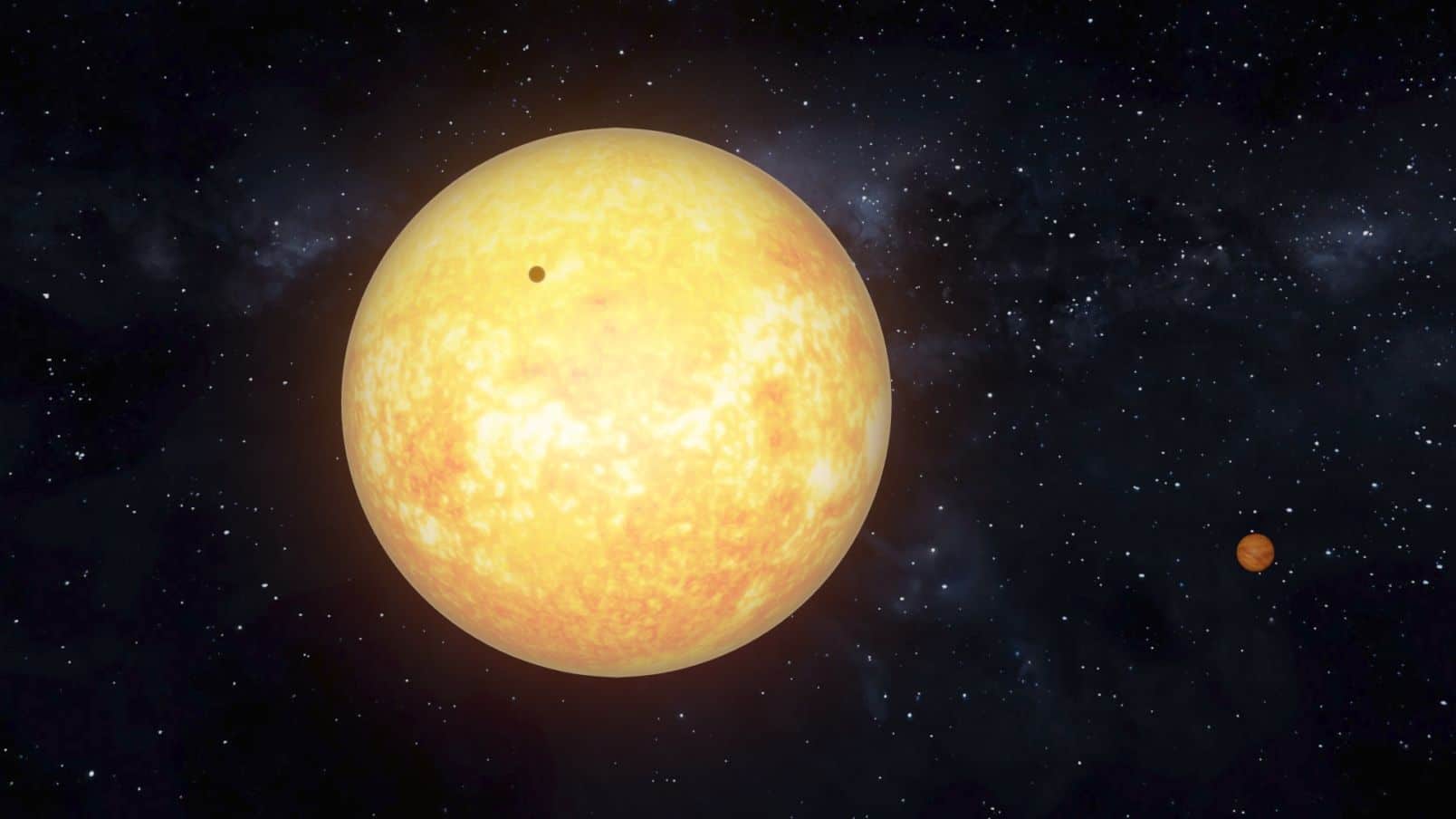Toruń Astronomers Discovered Super-Earth
In 2023 astronomers from the Nicolaus Copernicus University in Toruń discovered a new planet twice bigger and 15 times heavier than Earth. It circles the star known as WASP-84 in just 35 hours in a very tight orbit, causing its surface temperature to exceed 1000 degrees Celsius. As its rocky surface is directly exposed to intense light, heat and wind emitted by its star, no atmosphere is expected. In this planetary system there is another massive planet similar to Jupiter, although in a much closer orbit of just over 8 days, classified as the so-called hot Jupiter. Among thousands of known planets in hundreds of planetary systems, WASP-84 is the sixth case of a hot Jupiter accompanied by another planet.
WASP-84 was one of 10 systems studied by Weronika Łoboda as part of her BA project. ‘I analysed the star brightness measurements using observations obtained in 2021 with the Transiting Exoplanet Survey Satellite telescope to detect small, periodic decreases in brightness. These can be caused by cyclic obscuration of part of the star’s disc by a planet passing in its background. Astronomers call this phenomenon an exoplanetary transit’ said Łoboda. The decline in brightness during the transit of the discovered super-Earth was extremely difficult to detect even through space telescopes, so the astronomers overlapped dozens of observations. This averaging allowed them to develop a model and learn physical properties of the new planet.
Łaboda also detected faint and hardly perceptible signal in noise while analysing WASP-84. ‘It must have been a planet and, in addition, located 16 times closer to its star than Mercury in the Solar System!’ she said. Researchers verifying the results included Jan Golonka, a doctoral candidate at the Interdisciplinary Doctoral School ‘Academia Copernicana’. He said the planet turned out to be a scaled-up Earth with an iron-rich core and a silicate mantle. Toruń discovery was described in a paper published thanks to international cooperation with scientists from Germany and Spain.







